Forums › Laser Treatment Tips and Techniques › Soft Tissue Procedures › Fractured Cusp/Onlay
- This topic is empty.
-
AuthorPosts
-
BenchwmerSpectatorThis is a case from my associate, Jeff Leigh. I am the patient.
Vital #30, fractured cusp. Treatment will be a bonded BelleGlass composite onlay #30.
The PerioLase, pulsed FR Nd:YAG laser will be used for tissue retraction before impression.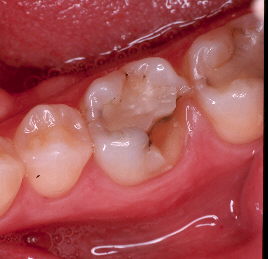
Before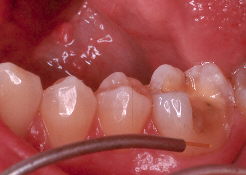
Shows the PerioLase handpiece w/ 340 micron contact fiber. Parameters: 3.0 W 20 Hz 150 usec for troughing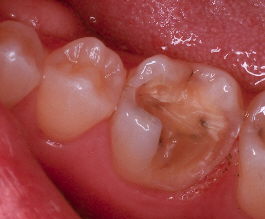
Ready for impression.
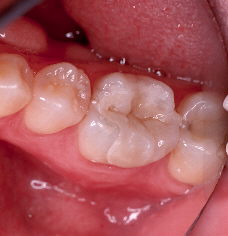
Two-weeks later at insert, used Panavia-F Light dual cure resin bonding system.Dr. Leigh recieved his ALD Standard Certification at a ADT course in Chicago a couple of years ago.
You need to believe in your staff, your treatment protocols and philosophies, even if it means you sitting through the dental treatment from the other side.
Jeff
Robert GreggParticipantJeff–
Very nice appearance of tissue, tooth and restoration!
What sort of camera did you use?
Bob
SwpmnSpectatorJeff:
Nice case!!!! Nd:YAG troughing looks great with no charring. Was your “goom” sore the next day?
Did Dr. Leigh use the Opus Er:YAG to remove that old composite?
Speaking of sitting on the other side of the chair, guess who this is?
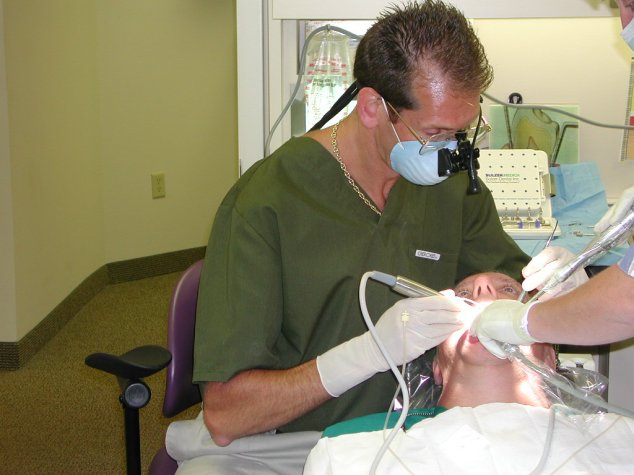
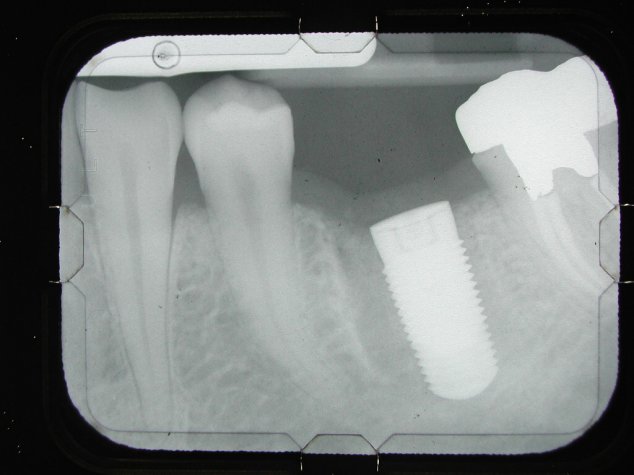
Al 😉
Glenn van AsSpectatorJeff: thanks for sharing a nice conservative technique for us to see……..
I dont like doing these kinds of preps because in my hands inevitably an unsupported cusp fractures off (MB for instance) but you have done it well. I dont believe the bonding strengthens the tooth so much.
ANother question, why Panavia F which is so opaque for such a case. I think an alterantive would be a resin cement such as Variolink or Calibra or something translucent which would have made your margins less noticeable because they do stand out.
Again in closing , thanks for sharing the case, and dont think I am being too picky ( I didnt talk about biologic width yet did I
 )
)Grin
and thanks
Glenn
BenchwmerSpectatorGlenn,
The new Panavia Light cement is a resin cement dual cured with a dual cured dentin bonding agent. Self-etching, all in one prime and bond. Acceptable color for posterior onlays. Never any post-sensitivity. This was bonded w/o using any local. Great stuff.
Dr. Leigh wanted to do a crown on #30, (Ivy Leaguer).
I’ve been doing indirect composite onlays now for 12 years, never shoeing cusps, you have to believe in bonding. Of the thousand onlays, maybe a dozen fractured cusps over these years. Those you can repair w/ Air abrasion and more bonding. This is the third one Dr. Leigh has done for me in the last 4 years. All wonderful. No post-op discomfort at all after being lased.
Bob,
The photos are using a 20-year old, 35mm Nikon 6000, w/ Lester Dine ring light, Fugi slide film, scanned w/ HP Photo-Smart S20. These were taken using a mirror.
Thanks.
Jeff
Robert Gregg DDSSpectatorHi Jeff,
I end up in your camp about bonding these sorts of restorations.
I started bonding with DICORs in 1985, and after figuring out it was the poor occlusion that caused my problems, I now have complete confidence in my posterior inlays like this.
But I have EVERY crown, inlay whatever patient back for a one week post-op check to look at their bite on the new restoration. AMAZING what shows up ay 1 week that didn’t at the seat appt.
Bob
BenchwmerSpectatorBob,
Using LA and acid etch I used to need frequent follow-up occlussal adjustments. Now that I can seat most of these onlays without using LA and acid-etching, I see better occlussal results and almost no sensitivity.
Jeff
Glenn van AsSpectatorHi Jeff: thanks for the update……I will maintain that I dont like the opaque color for posterior white onlays or inlays………for gold ok but that is your choice.
As for the bonding , I am glad you are getting those kind of results , I dont. My experiences with bonded indirect resins hasnt been very good. Same kind of results as with Targis Vectris which sucked in my hands.
I applaud your efforts and photography.
Thanks
Glenn
Robert GreggParticipantHi Glenn and Jeff,
Since we are on the subject of ceramics in posterior teeth, I thought you might want to look at one on an upper left first molar “DO”. Place in 1992, this is an 11 year old “DICOR” that I photographed today on exam.
[img]https://www.laserdentistryforum.com/attachments/upload/VickiDICOR1.JPG[/img]
I can polish or abrade that margin down and/or remove the stain/decay and reseal if I want to. I didn’t.
[img]https://www.laserdentistryforum.com/attachments/upload/VickiDICOR3.JPG[/img]
Was this, is this a good service? Not very opaque, as I barely noticed the inlay under 20:20 view
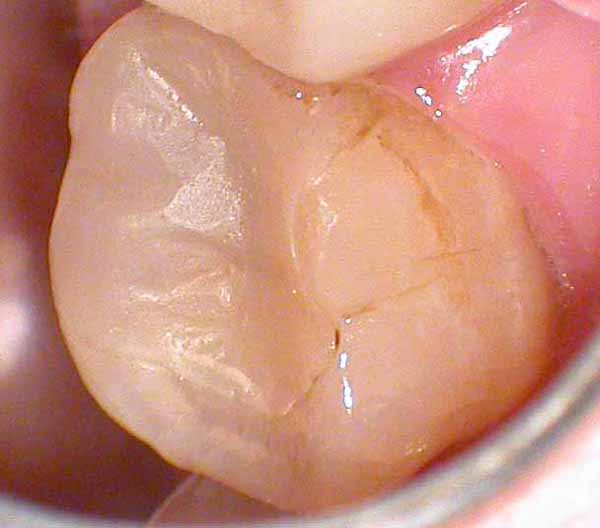
Did this restoration hold up? Did it “restore” the tooth? Did it “protect” the tooth from secondary fractures? Is it easier to see stain or decay here than with a gold margin? Did it not fracture itself? I answered YES to all those questions.
Bob
BenchwmerSpectatorGlenn,
Panavia F Light is not the old Panavia used for Maryland bridges, it’s a new formulation, dual cured, tooth colored, about a (A3), comes w/ ED self prime and bond system.
Bob,
Still looks good. I only used Dicor for full crowns, always composite for onlays, like the way it adjusts, polishes, doesn’t wear opossing teeth.
Here is a case from 1994:
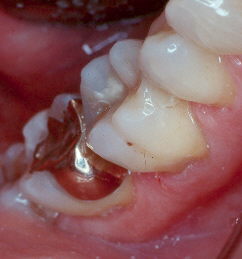
Both done at same time one gold, one Herculite Lab XRV
Now:
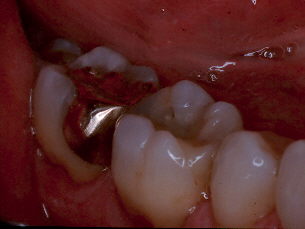
I’m happy with both 10 year old onlays.
Jeff
Robert Gregg DDSSpectatorJeff,
DICOR only wore opposing teeth of you put feldspathic porcelain externally for shade.
I always used unshaded and unglazed DICOR and the abrasiveness was nearly identical to enamel.
Take a look at the pictures above. It’s the ceramic that is wearing!
I obtained my coloration from the resin cements I used. Ray Bertoloti once told me that I was the first he had heard doing that. I told him I learned it from him. He said he’d never heard of it. That was 1987…..
Bob
-
AuthorPosts
